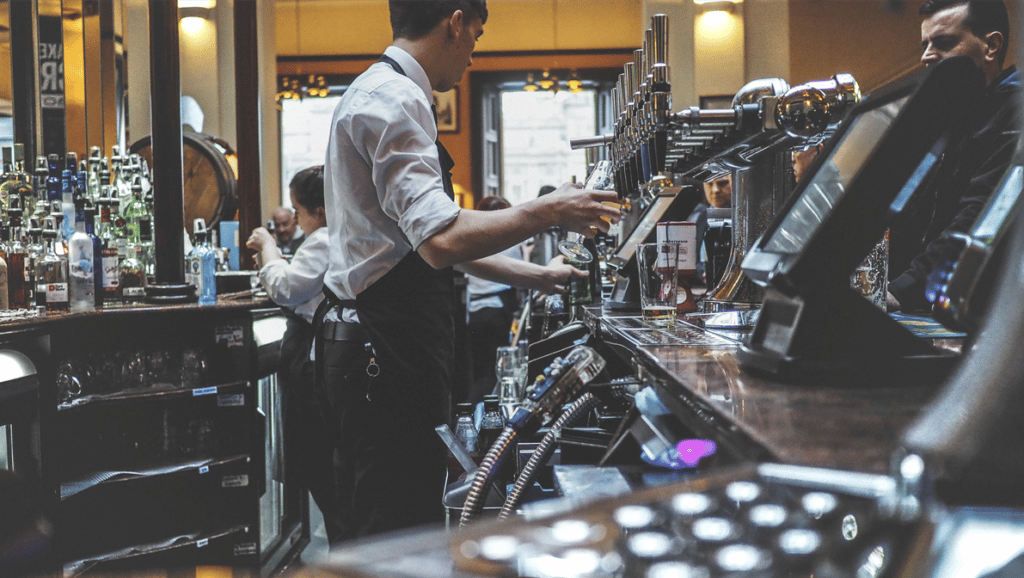Your financial statements, such as your restaurant balance sheet and profit and loss (P&L) statement, aren’t just records of sales of profits, but ways to better understand your business. They help you lay the foundation for a strong operation and allow you to make informed decisions now and for the future of your restaurant. Your balance sheet works hand in hand with your P&L, so it’s important to start there.
Restaurant profit & loss statements
In the simplest terms, your P&L can be described in this formula:
Sales – Cost of Goods Sold – Expenses = Profit or Loss
By monitoring these metrics, you can compare your business to industry targets or monitor different experiments you may be running. For both single-unit operators or nationwide restaurant groups, your data can help you have context for your future decisions about controlling expenses, menu adjustments, or labor cost controls. Some financial reporting software will segment your P&L data by location, helping you drill down to identify the strengths and weaknesses within your organization.
Calculating your profit and loss statement
Your Profit & Loss statement tracks detailed information about your sales, CoGS, and expenses, calculating your total profit or loss with the following formula:
Sales – Cost of Goods Sold – Expenses = Profit or Loss
Your P&L is extremely valuable to manage your operations, budget, and future business growth. By monitoring key metrics, you can compare your business to industry targets or monitor different experiments you may be running. For both single-unit operators or nationwide restaurant groups, your data can help you have context for your future decisions about controlling expenses, menu adjustments, or labor cost controls. Some financial reporting software can even segment your P&L data by location, helping you drill down to identify the strengths and weaknesses within your organization.
The importance of automated daily reporting for P&L statements
Not all P&L statements are created equal. One of the most important considerations for preparing your P&L is the timeframe for reporting. To stay proactive, the standard frequency for running a P&L is daily, or at the very least, weekly.
Before modern restaurant software, P&Ls and balance sheets required manual data tracking and analysis. Many restaurant owners only ran their P&Ls once a month or once per reporting period.
However, with modern restaurant operations software, you can automate reporting and tracking data through an integration with your Point of Sale (POS) system. Automated daily reporting ensures that preparing your P&L statement is quick and easy.
If you’re only running your P&L statement once a month or quarter, by the time you receive your data, it is already outdated. Without the opportunity to make immediate, data-driven decisions with anomalies in P&L numbers, you are leaving money on the table. Running your P&L frequently, through automated daily reporting, allows you to take proactive steps in the moment to counter any immediate problems before they become persistent or costly.
Managing your restaurant balance sheet
While your P&L is a key restaurant financial statement, it doesn’t tell the full story of your financial health. Your P&L doesn’t include how much cash you have on hand or in the bank, the state of your inventory, or if you are staying up to date with your bills. For that, you’ll need to create a restaurant balance sheet. Your restaurant balance sheet complements the P&L statement and helps you understand the full picture of your financial health.
Creating your restaurant balance sheet
A balance sheet shows the net worth of a restaurant at a certain moment in time, detailing your restaurant’s assets, liabilities, and equity. Your balance sheet empowers you to understand your general financial health in the moment, as well as forecast your short-term and long-term cash flow. With your cash statement in hand, you know whether you are losing money, making money, or breaking even.
There are three main line items in a restaurant balance sheet:
Assets
Restaurant assets are what your restaurant owns, such as cooking equipment or inventory. Assets also include cash on hand.
Liabilities
Restaurant liabilities are what a restaurant owes for a certain period of time, like outstanding vendor bills, rent for property or equipment, lines of credit, or loans.
Equity
Restaurant equity tells the life-to-date story of earnings or loss. Equity can be thought of as net assets because it is the difference between assets and liabilities. Part of equity is retained earnings – a restaurant’s net income from operations and other business activities retained by the company as additional equity capital. Retained earnings are thus a part of the restaurant’s equity. They represent returns on total equity reinvested back into the restaurant.
Bringing it all together
Robust restaurant accounting software, with tools like automated AP and a full POS integration, can help automate the process of tracking expense and revenue data that makes up your total assets, liabilities, and equity.
Once you have collected the information about these three line items, you can view your balance sheet. With your total assets listed on one side, and liabilities on another, your restaurant’s net worth is what is left over. Another way to understand the relationship between your assets, liabilities, and equity is with the following formula:
Liabilities + Equity = Assets
Cash flow statement
Your cash flow statement details your business cash flow, which is money coming in and out of a business. It itemizes the sources and uses of cash – where is your cash coming from and what is using it. This financial statement can help you understand your business health by tracking how much money you have on hand, which may differ from what you have “on paper.”
What is recorded in the cash flow statement?
One of the key insights from a cash flow statement is your operational activity. Your operational activity includes the cashflow related to fundamental business operations, and how it flows in and out of your business. Your core operational cash out will include expenses such as your restaurant labor costs, food costs, and services such as advertising. Operational cashflow will primarily include restaurant sales and the selling of assets.
Another key metric recorded in your cash flow statement is your debt and financing, as taking on debt or financing assets will change cash flow. For example, an increase in debt could mean an increase in cash since you are gaining cash from something like a loan or waiting to pay cash on an accounts payable. A decrease in debt can mean a decrease in cash because you are paying off a liability.
Your debt and financing tracking should take into account the difference between short-term and long-term assets. Short-term assets, also called liquid assets, can be easily converted into cash. They may include the funds in your bank account or food and beverage inventory. Long-term assets, otherwise known as non-liquid or fixed assets, cannot easily be translated into cash on hand. They include land, kitchen equipment, or your restaurant building.
Calculating cash flow for a period
When calculating your restaurant’s cash flow, first choose your reporting period. Then:
- Start with your restaurant’s net income for that period of time.
- Add operational cash inflows. This will primarily be from restaurant sales, and it may also be from sales of any assets.
- Subtract all operational outflows. This will include your operational expenses, any investments, and debt.
- Compare your ending cash with your beginning cash. The difference between these two values is called your “net cash change”, otherwise known as your restaurant’s cash flow for this reporting period.
Conclusion
Your success as a restaurant is dependent on making smart, data-driven decisions in the moment that set you up for long-term success. Staying up to date and informed about important financial statements, such as your restaurant balance sheet, prepare you to meet operational and financial challenges both today and into the future.
If you would like to easily track financial data and automate financial statements, consider a comprehensive, restaurant-specific management solution. Restaurant365 restaurant accounting software is a cloud-based platform that’s fully integrated with your Point-of-Sale system, as well as to your food and beverage vendors, and bank. For more information, schedule a free demo today.


